
During an early fall walkabout in my urban permaculture garden, I chatted with Frank Giustra about how city and suburban gardeners can enjoy high fruit yields in small spaces.
It is truly AMAZING how much fruit diminutive (a.k.a. dwarf, tiny) trees can produce in a small amount of space. This is great news for urban and suburban farmers, even if you are farming in pots on a balcony. There are best-practices to adopt of course, and in true urban permaculture fashion, the best of those practices follow nature's simple logic.
I planted a tiny fruit and nut orchard of 18 trees, including two in pots, just over one year ago in our front yard, and those trees have done incredibly well. They seem content and I am very happy with how the trees fit into my garden plan, and the joy they have brought me and my family and friends.

To be clear, my fruit and nut trees are of a particular sort known as 'dwarf' trees. Within that category there are many options and categories ranging from miniature bush size trees to semi-dwarf trees that reach 12-15 ft in height, to the more common dwarf offering that grow no taller than 8-10 ft. Most dwarf type trees you will find available for purchase are the latter type, and their size and shape can be further managed by pruning, and controlling how and where they are planted.

Six of our trees (three golden sentinel apple, three lapins cherry) are what are known as 'columnar' or vertical cordon trees. Through the magic of precision pruning, these trees produce fruit vertically along and very close to the trunk, as opposed to branching dwarf trees that produce fruit horizontally along branches.
Columnar trees are the stars of small-space fruit tree farming. Imagine a picket fence made of columnar apple and cherry trees; so beautiful and productive.
In our backyard, we have one especially beautiful older espaliered apple tree, producing gala, chehalis and gravenstein apples along three sets of paired horizontal branches grafted onto a central dwarf trunk.
Espalier and cordon (columnar, but at a 45-degree angle) are two very old techniques of pruning and shaping fruit trees to grow flat against stone walls and buildings. The thermal mass of the stone collecting solar energy all day and slow-dripping it back to the fruit at night works miracles. As urban permaculture gardeners we can this logic by placing potted fruit trees in front of masonry and walls of buildings, south-facing ones being optimal of course.
Dwarf fruit trees of all kinds are perfect for smaller space gardeners, because no matter how small the trees are, the fruit size remains standard. Dwarf fruit trees tend to produce fruit sooner than standard trees, often after just two to three years, versus three times that for standard. Through a process of 'grafting' conventional branches (top stalk) onto specific dwarf type rootstock (below) chosen for its hardiness and growth capacity, the ultimate size of the grafted tree is minimized. The tree's growth directions and limitations are determined by the rootstock. The shape and branching of the tree is determined in large part by us.
In my permaculture garden, in three guilds of three trees each, I planted six apple, two pear and one crabapple tree (for cross-pollinating the apples). The trees were arranged in a triangular pattern, with equal sides of approximately 24" in length. As a rule, trees do better in thoughtfully spaced groupings than they do on their own, communicating and exchanging nutrients, information, even protection from pathogens and predator organisms and mircroorganisms below-ground, by way of established mycorrhyzal networks. There are important bodies of published research dedicated to this complex subject, but the premise makes sense and anecdotally, works in my garden.
When siting the trees, I turned them to best advantage the sun and also each other, leaving as much of the 'central open column' at the centre of the triangle, between the trees, clear and devoid of any branches. When I was happy with the arrangement of and within all three guilds, I planted the trees in 50/50 native soil and organic compost (to mimic composted natural leaf litter) and then removed ALL branches that crossed over each other or into the air space of that central column.
It should be noted that if your native soil is inferior, you should amend the mixture to suit. Soil test kits are widely available. Instinctively, I did not stake my trees because I wanted to encourage strong root development quickly. Admittedly, staking is recommended by orchardists, especially in unsheltered or windy areas.

Creating and maintaining a central column is key to tree health as it affords ample sunlight, and allows for drying breezes to pass through and help prevent mildew and disease. Indeed you end up with somewhat 3/4th sided trees, but in groupings they are lovely to look at, and not at all unbalanced.
If you were to plant your trees in rows versus groupings, you would want to prune away only those branches that crossed over each other within their own individual frameworks (same reasons -- to keep things dry, airy and sunny)
I keep my trees pruned to below 7ft in height, as that is how high I can comfortably reach to harvest the fruit, attend to aphids and general tree health, and prune branches twice annually.
Throughout the growing season, I check all of the trees early in the morning, to make sure I notice small changes or pests that require bio-management. This is the best time of the day for me. All is quiet, the birds are waking up, the grass is dewy and soft, and that garden-grower connection is at its strongest. In the morning I see everything, including those plants and/or insects that need help establishing or restoring balance within their habitat.

To aid in establishing balance and with respect to nature's logic, we underplanted our dwarf tree guilds with beneficial perennial companion plants. These dual-purpose plants attract pollinators to ensure fruit-set, attract predator insects to feed on aphids and other pests, deter aphids and other pests, keep the soil cool through bio-mass mulching, feed the soil biology by contributing trace minerals and/or nitrogen, and produce edible herb foliage, flowers, seeds, etc. Some underplants are thought to emit ethylene gas which helps ripen fruit.
Practical urban permaculture suggests incorporating several different beneficial plants under fruit trees, and these range from borage to tansy. Where you live, which plants or seeds are available to you, and where you trees are planted, will determine your choices. I chose tall blue flowering borage in the centre of the circular column, medium height bushy chamomile in the middle of the circle, and low flowering chive around the perimeter. I love classic symmetry in garden design (hence, UpFront & Beautiful), so the peaceful, repeating aesthetic was important to me in the front garden. In our back garden, and for potted fruit trees, perennial underplantings are more casual and wild in arrangement.

Nearby to the apples and pears, in a perpendicular arrangement, I planted another three guilds of dwarf trees -- three plums, next to a solitary almond (anticipating its size in the future), next to three columnar cherry trees. The cherries did well as they were, as did the plums overall, but it is apparent that one of the plums must be moved in the spring, as it is commanding more space than I gave it. The culprit plum is a rather special tree that has five varieties of plum grated onto a single dwarf rootstock. By its nature, I suppose, it needs more space and grows more quickly than its guild companion damson and green gage plum trees. I should have expected this and will know better next time.
This first year of real fruit set, we ate and preserved a bounty of pears, apples, plums, and crabapples. The cherries were enjoyed pretty much by the birds, and the almonds require another year or two before flowering.
A lone Fuyu persimmon tree planted in a terracotta pot and underplanted with bait nasturtiums to distract aphids, is managing fruit very nicely as I write this at the end of October. Unexpectedly, almost invisibly as they do, the tree set a huge quantity of fruit early in the summer. As the season progressed and the tree self-limited its fruit production by dropping all but what it knew it could raise to maturity, the remaining fruit remained healthy and grew bigger and bigger. Today, the leaves are gone, and the fruit look beautiful, hanging on for dear life even through recent light frosts. I will leave the fruit on for some time yet as long as they remain strong and happy looking. Advice regarding off-tree (inside) or on-tree (outside) ripening is mixed, so I will watch closely every morning and decide for myself what works in my garden. If I get it wrong this year, I will know for next.
Just a few months ago in late summer, I planted two brown turkey fig trees, each flat up against a trellis upright. I had no hope of seeing fruit this year, yet both trees delivered a handful each of lovely soft figs. I will keep these fig trees pruned back hard, encouraging a low growing habit similar to the dwarf fruit trees. If the hard pruning goes well and the fig trees respond to training but still set fruit, I will apply what I learn to creating an espaliered fig hedge to separate the berry bed from the rest of the garden.
Around back, an espalier apple tree planted in an aluminum feed trough on casters, is underplanted with salvia (pollinator-friendly), chamomile (beneficial insects) and moss (insects/mulch). This small tree produces gala, chehalis and gravenstein apples in abundance, though we eat few if any of them. Now that we have the tiny orchards out front, I leave this backyard fruit, along with strawberries and some low-growing tomatoes, as bait for the squirrels and raccoons that we share our outdoor space with. The black bears that live in the surrounding forests don't care for unripened fruit as a rule, so they don't come around unless we leave ripened fruit or open compost as an attractant. With deference to our furry black neighbours, we are diligent about picking berries and fruit just left of ripe always, and we compost below-ground. This seems to work out just fine for us and for the wildlife. So far, so good.

This wouldn't be an urban permaculture story if it didn't end in abundance, so this one does. Very recently, at the suggestion of my children who wanted to make the tiny orchard fruit last as long as possible, I made a gorgeous thick and savoury fruit butter of sorts for eating and gifting. I call it 'savoury apple butter schmear' with shallots, Indian spices and concord raisins. Schmear because it contains so many ingredients, and also because it has so many sweet and savoury uses.
When my chef friend Robert Bartley visited last month to help Modern Farmer magazine publisher Frank Giustra and I can and oven-dry tomatoes for the Million Gardens Movement's 'Permaculture' series, he brought along some beautiful Concord grapes. Like most gifts of food that I receive, those grapes set a whole chain of culinary events into motion. This time, it was oven-dried Concord raisins. Those raisins in turn inspired not just the savoury fruit butter of which they became an ingredient, but a whole program of creating and gifting unique home-made Garden to Table recipes (more later on that). Thank you Chef!
And finally, in the ultimate urban permaculture spirit of wasting nothing at all, the home-grown apple cores and peels are ruminating currently in muslin-covered glass crocks, on the kitchen table, slowly, slowly becoming apple scrap vinegar. Quite possibly, this vinegar will become an ingredient in next year's schmear. To learn more about our Garden to Table traditions, and for recipes, visit the food gallery of this website, which will take you to my @chefathand food page on Instagram. Very soon, I will have permaculture garden and life recipes on this site, and the @upfrontandbeautiful Instagram page will be up and running too.

To watch the Modern Farmer | Million Gardens Movement video "Dwarf Fruit Trees" featuring our urban permaculture garden, on YouTube click here.
Subscribe to the Modern Farmer channel watch future permaculture segments.






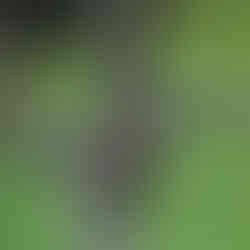

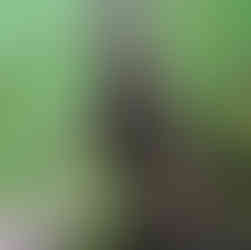



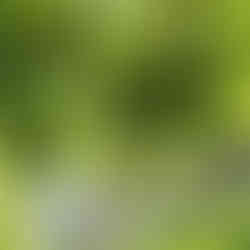


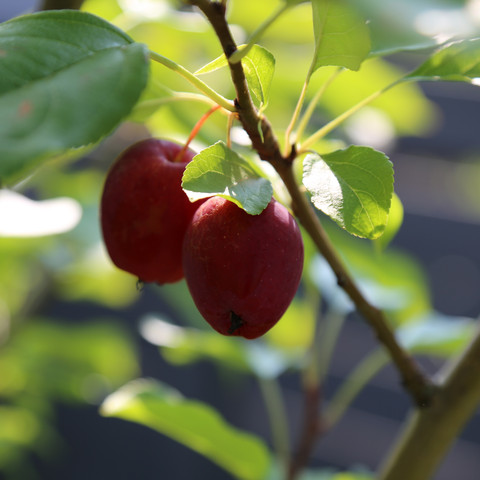
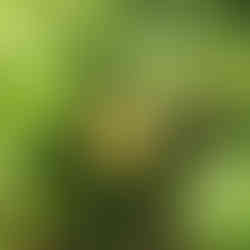






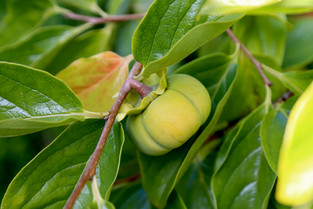
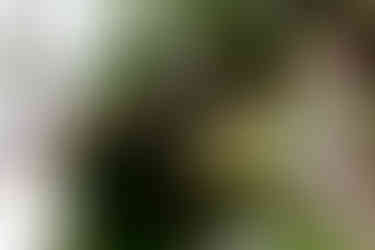




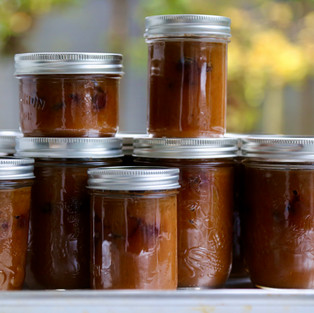

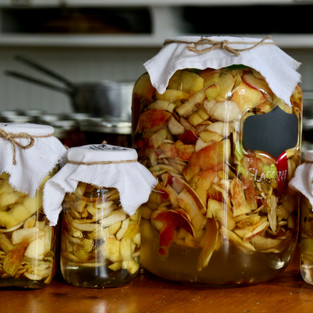
Comments